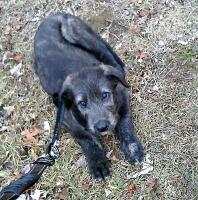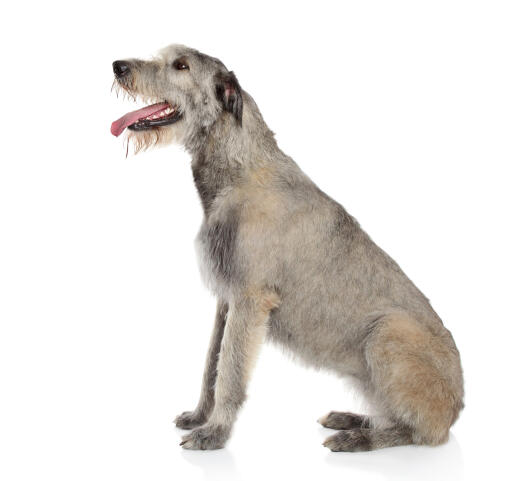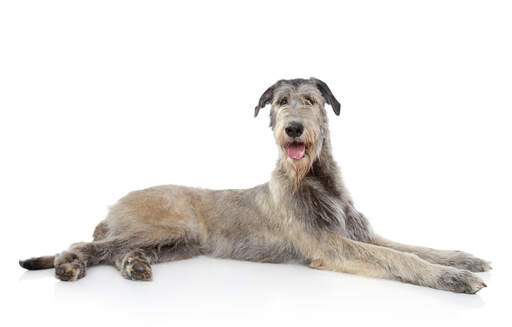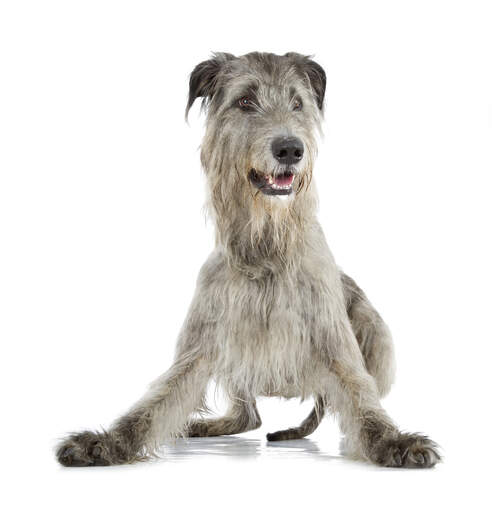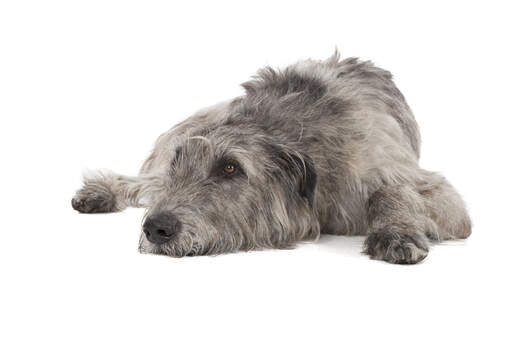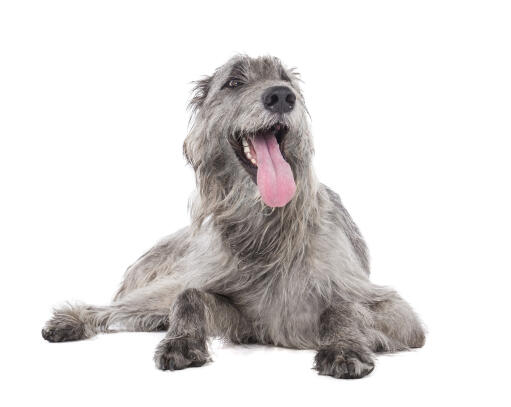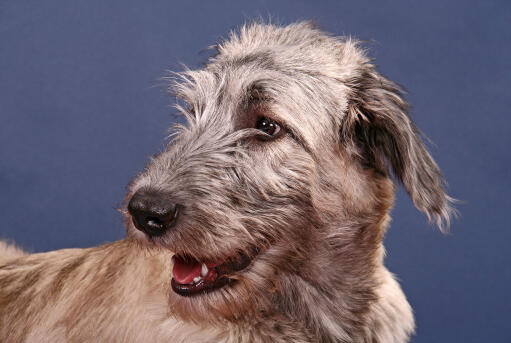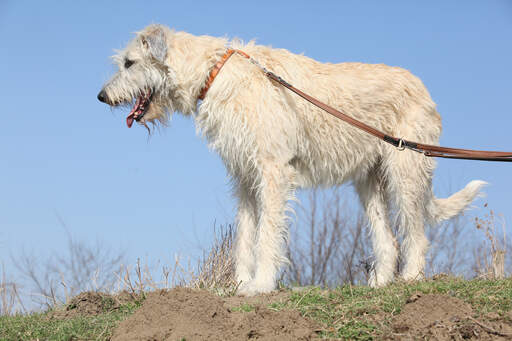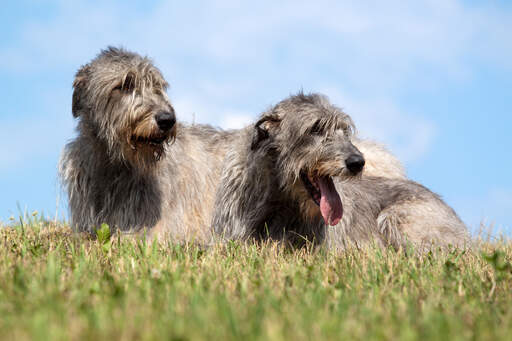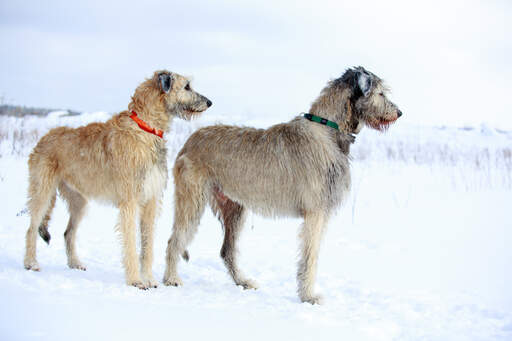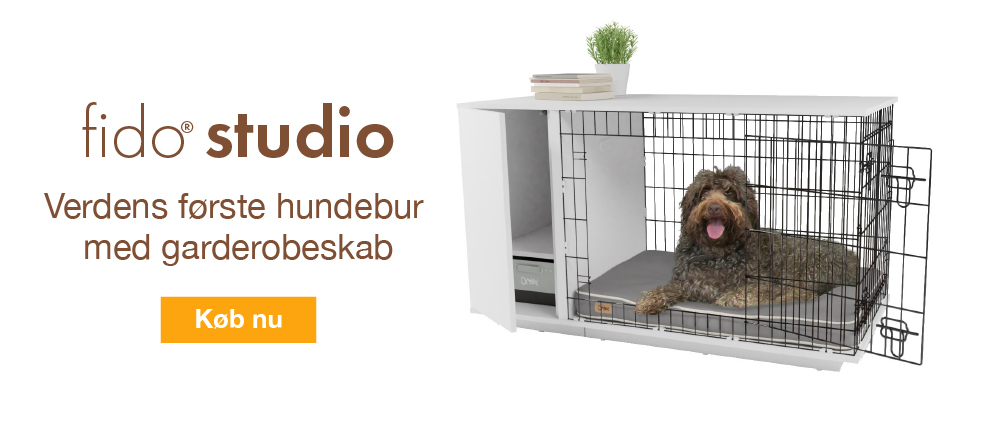Irsk ulvehund









History
Large dogs were often prized for their imposing stature and Wolfhounds were given to the Romans by the Irish. The Irish Wolfhound dates back to 400AD where they were bred to fight animals in Arenas in Rome. It was a very popular breed in Ireland and packs of these impressive dogs would accompany hunters to bring down wolves and Irish elk. By the late 1700's, the wolf was nearly extinct and the number of Wolfhounds plummeted. In the 1800's a conscious effort to breed started again and by the 1870's, Irish Wolfhounds were being exhibited in dog shows.
Behaviour
The epitome of the term 'Gentle Giant', Irish Wolfhounds really are a very calm, placid and easy going breed. They are calm in the house and will happily sleep given plenty of room and a comfortable bed. They like being around people and their family but aren't the most cuddly of dogs. However, they are affectionate and like to be with you. They get on well with others dogs usually, but some can chase cats. They are sight hounds and will chase anything that moves when out for a walk. With such long legs, they are incredibly fast runners. Training needs to start early and walking on the lead or an enclosed area is best to prevent them running away. They learn quite quickly but can be stubborn. As with most dogs, they dislike being left alone for long periods and will search out entertainment of their own if bored. Being so tall, they can reach everywhere, so hiding things on top of the fridge won't stop them. A long daily walk will usually suffice if they have a chance to run around and stretch their legs. They can be very greedy and need a lot of food. An expensive breed to keep, based on the food bill and tick/flea and worming treatment, but they are lovely dogs and well suited to a (large) family home. They are usually fine with well behaved children and will play, but this is a dog not a horse (even though it's so big) and they will not tolerate too much 'rough' play.
Hip Dysplasia and Bloat can be a problem for the breed, but this isn't that common. Damage to the tip of their tail is. Brushing a couple of times a week should be enough and a trim when the coat gets too wild.
Temperament
The Irish Wolfhound has an easygoing and reliable temperament. Gentle and calm about the house, like many large breeds they are actually very sociable and great with children and other dogs alike. They tend to form a loving bond with their close family but show little to no interest in strangers and if the need arises they can become formiddable guard dogs.
Health Problems
Health problems that can affect Irish Wolfhounds include canine hip dysplasia (CHD), elbow dysplasia, bloat, bone cancer, blood clotting disease, progressive retinal atrophy (PRA: degeneration of the retina which can lead to blindness) and heart problems.
Breed Details
- Status: Common
- Life Expectancy: 6 - 10 years
- Vægt: 47 - 68 kg
- Højde: 30 - 32"
- Rare: Nej
- Coat: Medium
- Grooming Requirements: More than once per week
- Town or Country: Land
- Minimum Home Size: Large House
- Minimum Garden Size: Large Garden
- Breed Type: Hound
- Størrelse: Giant
- Energy Level: Lav
- Exercise Required: Over 2 hours
Billeder af Irish Wolfhound
